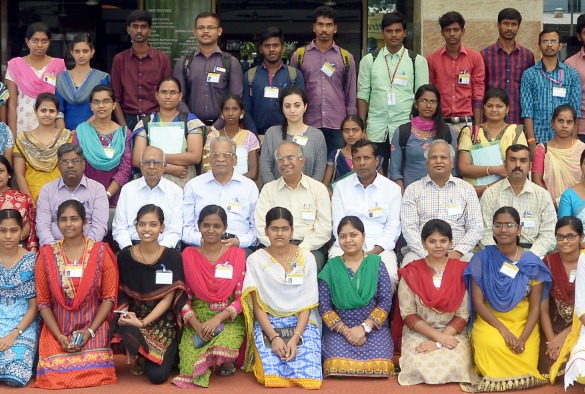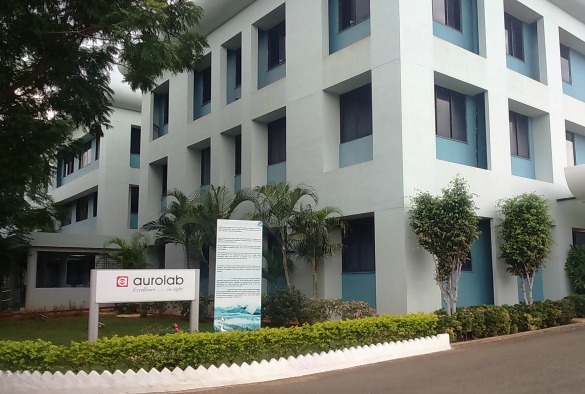
Atikah Haneef (2nd row from the top, 5th from left ) at the AMRF October Summit 2016
Dr Atikah Haneef is a postdoctoral researcher at the University’s Department of Eye and Vision Science in the Institute of Ageing and Chronic Disease:
“I’ve come to India to work at the Aravind Medical Research Foundation (AMRF), a component of the Aravind Eye Care System (AECS). The mission of the AECS is to “eliminate needless blindness, spread [a] sustainable model of high-quality, patient-centric healthcare throughout the world”.
The AMRF deals exclusively with ocular diseases and is one out of four of the major research facilities in India which is specialist in this area. Their subdivisions within the department consist of the following; histology, cell and stem cell biology, proteomics, molecular genetics, immunology, ocular pharmacology, ocular microbiology, and bioinformatics.
The collaboration between the AMRF and the University of Liverpool was brought about through Professor Rachel Williams and Professor Colin Willoughby, with Professor Dharmalingam and Dr Prajna at the AMRF. My travel here was a part of the grant awarded by the EPSRC for research into keratoconus. Through AMRF I am able to work on keratoconic human tissue, and test the novel chemical cross-linker for the treatment of keratoconus we are developing.
Madurai is hot, busy and loud!! I have to cross a junction to reach the AMRF from the place I’m staying at. Imagine that game where the person has to cross a busy virtual road, a bit like that, but at least ten times more alertness required, and the densely packed cars, buses, rickshaws and trucks are anything but virtual! You can’t be hesitant while crossing, the trick is to find a spot and GO! I get to the AMRF, which is situated directly opposite the Free Eye Hospital.
I can see just by walking past how busy they get every day. Being directly opposite the hospital makes it optimal for collaboration between the academics and clinicians. It also means that the AMRF is second in line to receive human ocular tissue for research, the first of course being transplants for patients. I am working with Dr Ramprasad, who visited the University to work with us for six weeks previous to my coming to India.
A visit to the Aurolab, a beautifully maintained laboratory, shows the product development line they have set up, which includes various clean rooms and trained personnel for this area of work. The work I do entails treating diseased and normal corneal tissue received from the hospital with the novel chemical cross-linker, and then testing the biomechanical properties of the treated tissue at Aurolab to ascertain whether the therapeutic concentration and treatment time I have tested in the UK are in fact suitable for diseased cells and tissue. The results so far have been promising.
The experience here has been a positive one so far and it feels like the last three weeks have flown by very quickly. I am learning how research is conducted in a completely different culture, and with just over a month left to go here, I hope I will be able to fit all the experiments I have planned in the time I have left.”
